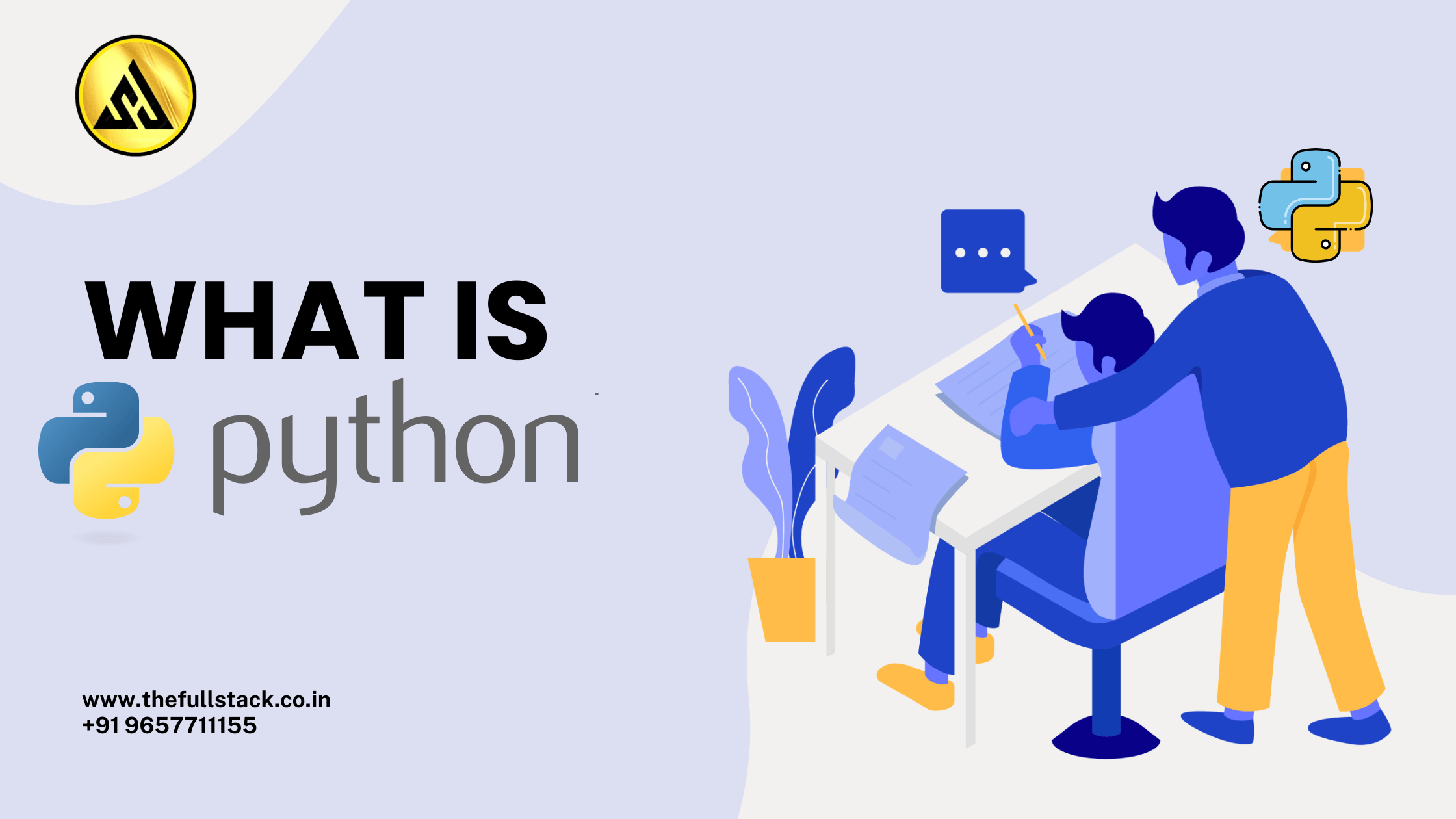
What is Python?
Python is an interpretable, high-level programming language that is renowned for its ease of use, readability, and adaptability. Since its 1991 introduction, Python—which was developed by Guido van Rossum—has grown to become one of the most widely used programming languages globally.
Python provides tools and frameworks that make it easy to create anything from basic scripts to sophisticated AI systems, regardless of your level of experience as a developer.
Simple and Easy to Learn
Python’s English-like syntax has made it the most popular language for newcomers. It enables novice programmers to concentrate on understanding logic instead of intricate grammar rules.
💡 Interpreted and Dynamically Typed
Python operates line-by-line because it is an interpreted language. Additionally, it is dynamically typed, meaning that Python determines a variable’s type at runtime, saving you from having to declare it.
📚 Open-Source and Community-Driven
Python is entirely open-source and free, and it has a sizable development community that keeps adding to its expansion. PyPI (Python Package Index) offers thousands of third-party libraries.
🌐 Versatile Across Domains
Python is a multi-purpose language used across diverse domains:
- Web development (Flask, Django)
- Data analysis & machine learning (pandas, numpy, scikit-learn)
- Automation/scripting (automate Excel, emails, web scraping)
- Game development (Pygame)
- Cybersecurity & Ethical Hacking (popular for pen-testing tools)
- Embedded systems (MicroPython, Raspberry Pi)
🔗 Cross-Platform Compatibility
Python is cross-platform—you can run the same Python program on Windows, Linux, macOS, and even mobile platforms with minor or no changes.
🤖 Widely Used in Artificial Intelligence (AI)
Python has become the go-to language for AI and machine learning, thanks to its strong ecosystem of ML libraries and frameworks like TensorFlow, Keras, and PyTorch.
📈 Growing in Popularity
Python is one of the most popular and in-demand languages, particularly in domains like data science, automation, and software development, according to the TIOBE Index and Stack Overflow Developer Survey.
Why Learn Python in 2025?
If you’re wondering why you should learn Python, here are some powerful reasons:
- Top Demand: TIOBE and Stack Overflow often rank Python as one of the top three programming languages.
- Career Opportunities: Applied to web development, automation, AI, data science, and more.
- Simple to Learn: Python’s syntax is clear and easy to understand, making it perfect for novice programmers.
- Strong Community Support: Open-source contributions, forums, tutorials, and extensive documentation.
Key Features of Python
If you’re starting with Python basics, it’s essential to understand the core features:
- ✅ Interpreted Language: No need to compile. Just write and run.
- ✅ Dynamically Typed: No need to declare variable types.
- ✅ Object-Oriented: Supports OOP concepts like inheritance and encapsulation.
- ✅ Cross-Platform: Write code once, run it anywhere (Windows, macOS, Linux).
- ✅ Extensive Libraries: From web development to machine learning – Python has a package for everything!
🛠 How to Install Python
Step-by-step guide to install Python on your system:
🔹 For Windows:
- Go to https://www.python.org/downloads/
- Download the latest version.
- Run the installer and check the box “Add Python to PATH.”
- Click Install.
🔹 For macOS/Linux:
- Use Homebrew or package managers like
aptoryum:
bashCopyEditsudo apt update
sudo apt install python3
✍️ Your First Python Program
Open your code editor or terminal and type:
pythonCopyEditprint("Hello, World!")
This is your first step in Python programming for beginners. It’s that simple.
📚 Basic Python Concepts to Learn Next
After this introduction, you should focus on the following Python basics:
- Variables and Data Types
- Conditional Statements (
if,else,elif) - Loops (
for,while) - Functions
- Lists, Tuples, and Dictionaries
📦 Real-World Use Cases of Python
Python is everywhere:
- 🧪 Data Science & AI: Used with libraries like
pandas,numpy, andscikit-learn - 🌐 Web Development: Frameworks like
DjangoandFlask - 🤖 Automation & Scripting: Automate daily tasks with Python scripts
- 📊 Data Visualization: Create charts with
matplotliborseaborn - 📱 App Development: With tools like
Kivy
🎯 Final Thoughts
Python is the ideal language for anyone wishing to learn programming or advance their existing technological abilities. Developers, data scientists, and AI engineers all love it for its robust features and easy learning curve.
Python is a good option whether you want to automate processes, analyze data, or create web apps.
You may be interested in:
Data Visualization In Data Science: Tools, Best Practices-2025


Leave a Reply